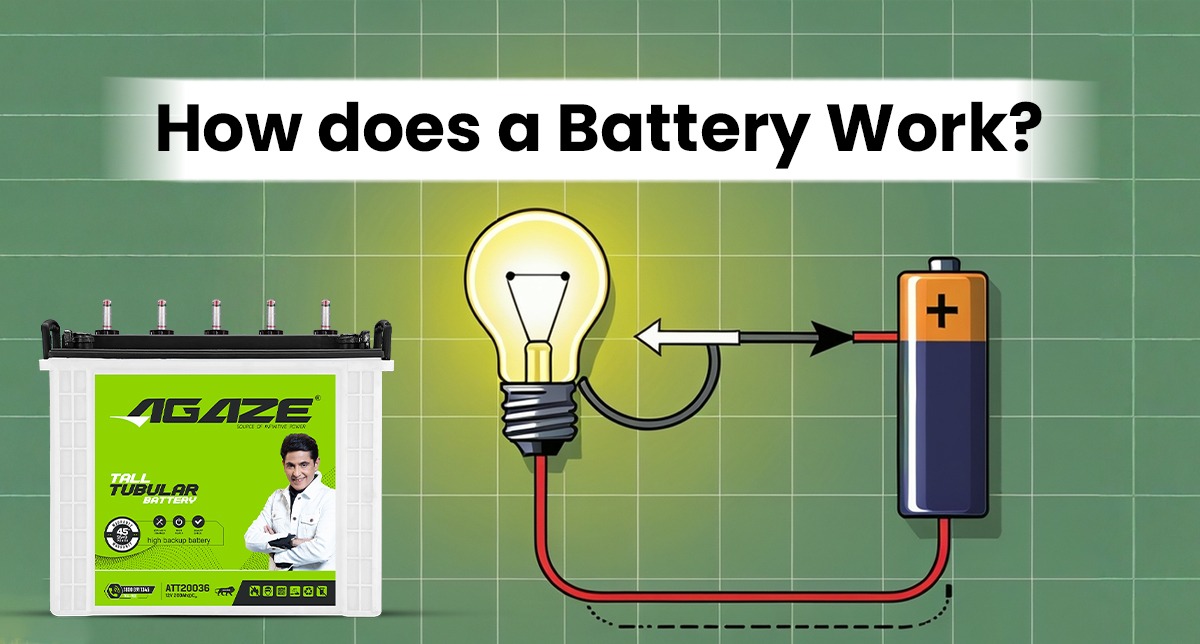Batteries are the backbone of contemporary living. Energizing domestic appliances during blackouts, they provide seamless power when we need it the most. At Sarex Batteries, we design high-performance inverter and tubular batteries based on cutting-edge technology coupled with long-lasting strength. But before we actually see the advantages of our offerings, let’s explore deeper into the science behind how precisely a battery functions.
The Science behind a Battery
A battery is an electrochemical device that translates chemical energy into electrical energy. This is done internally within the individual units of the battery termed cells. There are three basic elements to every cell:
Anode (Negative Plate): The electrode where oxidation occurs. It gives out electrons to the external circuit.
Cathode (Positive Plate): The electrode where reduction occurs. It takes in electrons and makes the circuit complete.
Electrolyte: A fluid (liquid, gel, or solid) medium through which ions can travel between the electrodes without direct contact.
When a device or appliance is connected to the battery, there is a chemical reaction. The flow of electrons is from the anode to the cathode through the external circuit, and an electric current is generated, powering the device. Meanwhile, ions move through the electrolyte, maintaining electrical balance.
Step-by-Step Process: How a Battery Works
Discharge (Power Supplying):
In the discharge state, the anode is oxidized and loses electrons. The electrons travel via wires and power devices such as fans, light bulbs, or inverters. Positive ions move via the electrolyte in the direction of the cathode, sustaining the flow.
Recharge (For Rechargeable Batteries):
Rechargeable batteries like Sarex batteries are designed for a multiple charge-discharge cycle. Plugged into a charger, electricity is forced back into the battery. This restores the original electrochemical reaction, forcing electrons back to the anode and re-establishing the original chemical composition.
The battery is thus restored to its complete ability for reuse.
Types of Batteries
Batteries can be classified into two broad categories:
- Primary Batteries (Non-Rechargeable)
These are throwaway batteries like AA, AAA, or coin cells. They are especially designed to be used once and cannot be recharged after they are spent. Typically used in clocks, remotes, and toys.
- Secondary Batteries (Rechargeable)
They are charged and discharged several times. Sarex deals in secondary batteries and tubular inverter batteries that are famous for longer lifespans, deep cycling, and higher reliability.
Key Components in Sarex Batteries
Sarex Batteries are designed with utmost care using the best quality material that provides improved performance. Some of the key elements are:
- High-Purity Active Materials: Improve charge acceptance and cycle life.
- Strong Lead Grids: Deliver structural stability and corrosion resistance.
- Optimized Electrolyte Composition: Facilitates uniform chemical reactions for dependable operation.
- Stepped-up Plate Design: Enables deep cycle design, making Sarex batteries perfect for inverters.
Why Batteries Are A Must
Batteries are more than a convenience – they are an essential in today’s energy-thirsty world. Their necessity can be observed in:
- Uninterrupted Power Supply: In blackouts or load-shedding, inverter batteries ensure homes and businesses continue to function.
- Mobility: The dependency of vehicles, e-rickshaws, and even electric vehicles are likely to be upon batteries with high performance.
- Industrial Use: Batteries are critical in telecom towers, data centers, and manufacturing units where there cannot be any downtime.
- Daily Essentials: From the needs of daily life such as using laptops to smartphones, portable batteries drive it with ease.
Sarex Batteries in Action
Sarex Batteries keep the Indian household and industry in mind. Regular power cuts and heavy energy consumption call for products that are long-lasting, efficient, and rugged. Here’s how our batteries stand out:
Inverter Batteries: Offers uninterrupted backup during power out, making your home more comfortable and productive.
Tubular Technology: Sarex tubular batteries with its design of deep discharge cycles allows better performance and longer lifespan than traditional flat plate batteries.
Conclusion
A battery converts chemical reactions into useful electricity – a straightforward principle with infinite uses. Lighting up homes through power outages, batteries continue to be at the heart of contemporary life. At Sarex Batteries, we merge this science with cutting-edge engineering to provide products that are dependable, long-lasting, and future-proof.

